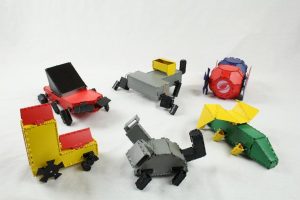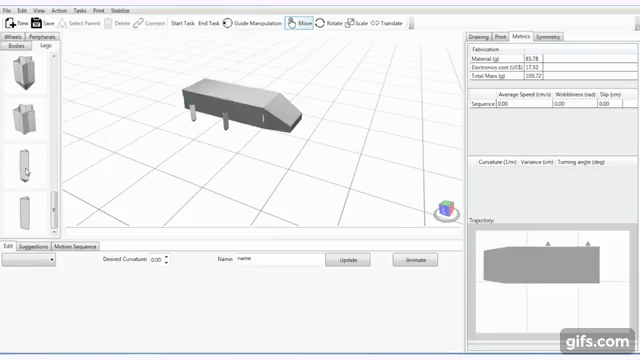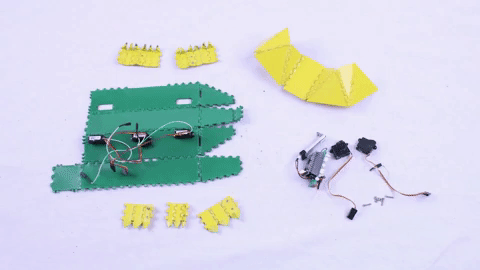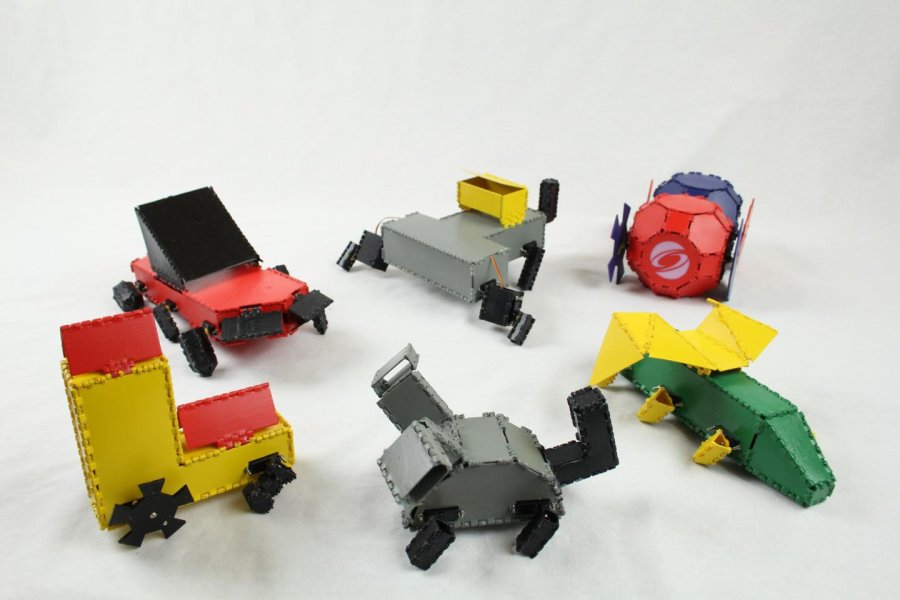
Credit: MIT CSAIL
Robots are starting to become a part of our daily lives as they take on tedious tasks like cleaning our carpets and weeding our gardens. But while there are some special kits to make a specific type of robot the idea of making one’s own custom bot is beyond the reach of most. Some technophiles are getting into designing and modeling robots on 3D printers but the process is very complicated and costly.
Researchers from MIT’s Computer Science and Artifical Intelligence Laboratory (CSAIL) are changing this situation by designing a system that will allow non-experts to customize their own robotic designs in a straightforward fashion. The MIT team has developed a system called “Interactive Robogami” that allows would be designers to choose from a library of pieces that fold and fit together like origami to design a robot in minutes.
“Designing robots usually requires expertise that only mechanical engineers and roboticists have,” says Ph.D. student and co-lead author Adriana Schulz. “What’s exciting here is that we’ve created a tool that allows a casual user to design their own robot by giving them this expert knowledge.”

Credit MIT
It may be hard for those that have not designed in CAD to know how complex modeling a design can be. But what is so pleasing about what MIT has put together is a user-friendly GUI where you drag the pieces offered where you want them and work out how and what direction the movement pieces like feet and wheels will go as in (“gait”) and shape (“geometry”). It needs to be appreciated that the app is removing all the complexity you would face if you took this process on yourself in a CAD environment by doing all these separate convoluted calculations in the background for you, so you can just focus on being creative.
“One of the key things is that you can design geometry and motion at the same time. Normally that’s two different processes, but here you can change one and see how it affects the other,” said Schulz.

Credit: MIT
Once the design is set it is then fabricated using an origami-inspired “3-D print and fold” technique. The printed pieces come out as flat faces connected at joints and then origami like folding is done to put the pieces into its final shape. Assembly can be snapped together in as little as a few hours.
“These tools enable new approaches to teaching computational thinking and creating,” said Daniela Rus, director of MIT’s CSAIL and collaborator on the research, in a news release. “Students can not only learn by coding and making their own robots, but by bringing to life conceptual ideas about what their robots can actually do.”
The paper on this new technology is published in the International Journal of Robotics Research.










